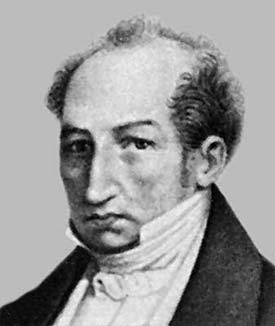<Back to Index>
- Astronomer Giovanni Antonio Amedeo Plana, 1781
- Playwright Colley Cibber, 1671
- Queen of Sweden Karin Månsdotter, 1550
PAGE SPONSOR

Giovanni Antonio Amedeo Plana (6 November 1781 – 20 January 1864) was an Italian astronomer and mathematician.
He was born in Voghera, Italy, to Antonio Maria Plana and Giacoboni. At the age of 15 he was sent to live with his uncles in Grenoble to complete his education. In 1800 he entered the École Polytechnique, and was one of the students of Joseph Lagrange. Jean Fourier, impressed by Plana's abilities, managed to have him appointed to the chair of mathematics in a school of artillery in Piedmont in 1803, which came under the control of the French in 1805. In 1811 he was appointed to the chair of astronomy at the University of Turin thanks to the influence of Lagrange. He spent the remainder of his life teaching at that institution.
His contributions included work on the motions of the Moon, as well as integrals, elliptic functions, heat, electrostatics, and geodesy. In 1820 he was one of the winners of a prize awarded by the Académie des Sciences in Paris based on the construction of lunar tables using the law of gravity. In 1832 he published the Théorie du mouvement de la lune. In 1834 he was awarded with the Copley Medal by the Royal Society for his studies on lunar motion. He became astronomer royal, and then in 1844 a Baron. At the age of 80 he was granted membership in the prestigious Académie des Sciences. He died in Turin. He is considered one of the premiere Italian scientists of his age.
The crater Plana on the Moon is named in his honor.